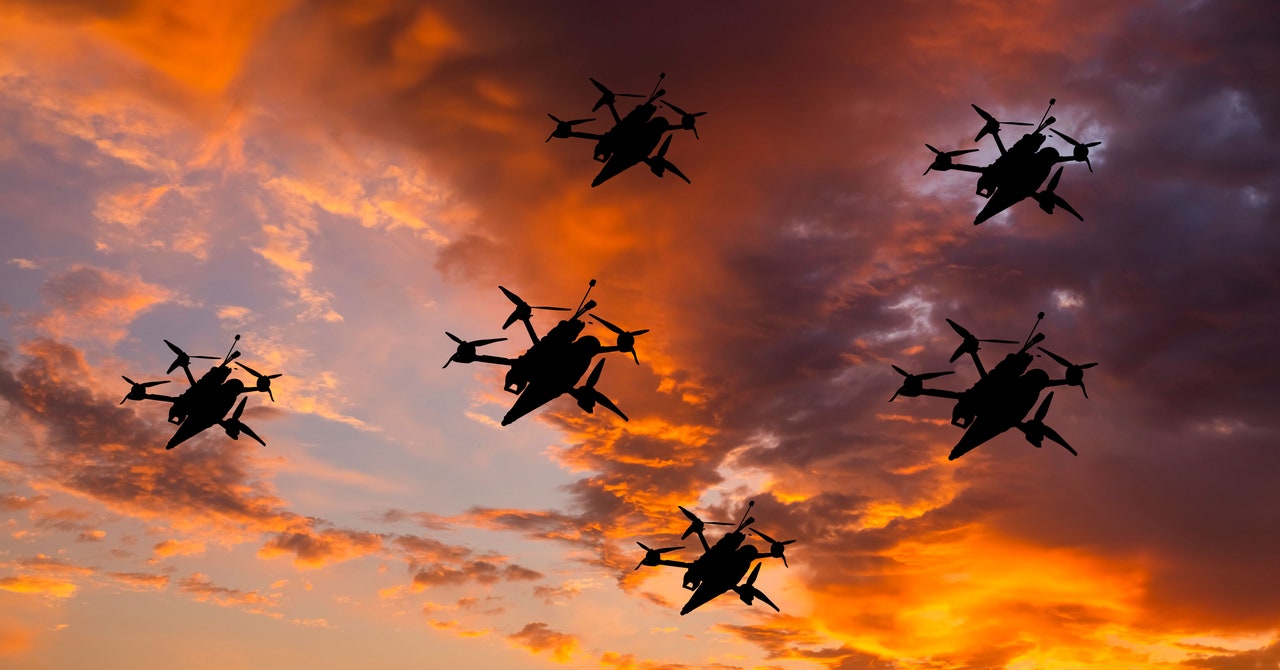Since the end of the Cold War, the world has lived with the threat of nuclear fire. The world’s nine nuclear powers have the ability to end all life on Earth. In Russia and the U.S., the power to launch those world-ending weapons rests in the hands of a single human being. This has been true for decades, but for a long time, the public was able to safely ignore the threat. Something’s changed though, and people have learned to fear them once again.
I’ve been covering nuclear weapons for a decade now, and I’ve watched it go from a niche curiosity to a major news beat over the last two years. Something shifted in 2024. The amount of nuclear stories and the public interest in nuclear weapons has changed.
Every time Vladimir Putin makes a vague threat, a cascade of stories hits the newswires. Every report to Congress about advances in the Chinese nuclear arsenal now gets national press coverage. Three weeks ago, 60 Minutes cut together a bunch of its nuclear coverage from the past decade and released it as a long video on YouTube. The New York Times has spent the last year publishing incredible investigative journalism about nukes. One of the biggest TV shows of the year is an adaptation of a video game set in a post-nuclear wasteland.
How did we get here? How did nuclear weapons move from a Cold War curiosity to a major public concern? These weapons have hovered like a Sword of Damocles above our heads for my entire life, but people used to safely ignore them.
Matt Korda, who tracks nuclear weapons for the Federation of American Scientists pointed to TV shows like Fallout, the nuclear coverage of The New York Times, and a prevailing sense of doom in American life. “The mood right now is apocalypse. Doomerism. Apocalypse is very much on people’s minds,” he said.
Last year, Oppenheimer told the story of the birth of nuclear weapons. A few months later, Amazon released Fallout, a nihilistic and absurd journey through a nuclear-ravage California wasteland. Both were enormous hits.
Korda also pointed to the election, especially when it was between Biden and Trump. “They were both very old. Both parties were champing at the bit to claim the other candidate was historically dangerous for the country. There were signs of impairment on both sides,” he said.
“I have to think that that had a real effect on people recognizing that one of these two people is going to be in charge of a very destructive nuclear arsenal and there’s serious problems with both of them in that respect,” Korda said. “The election made people a lot more aware that the nuclear system that we have deployed is designed, specifically, to concentrate power in the hands of a single individual.”
As Biden leaves office, he’s 82 years old. Trump will be 78 as he takes office and 82 when he leaves it. Putin is 72 right now. Earlier this week, the New York Times published a survey about the President’s sole authority to launch a nuclear weapon. The Times asked all 530 incoming members of Congress how they felt about the President having the ability to end all life on Earth. The responses represent an interesting cross-section of understanding an opinion.
Many were uncomfortable with the president launching nukes as a first strike but fine with the president launching nukes in retaliation for a strike. Democrats called out Trump as erratic. Republicans pointed to Biden’s diminished capacities. Some gave nuanced and complicated answers about deterrence, escalation, and sole authority. Many didn’t respond, and some gave yes or no answers, but those who answered in-depth did so with consideration and thought.
It’s something that’s on their mind.
Nuclear threats were part of the first Trump administration, it’s true. But the conversation around nukes is different now, and worse. “What was frightening about the first Trump administration was the cavalier way in which Mr. Trump made nuclear threats, and mostly with respect to North Korea. So you know, the Fire and the Fury fall of 2017 and then, of course, all the negotiations, which ultimately failed with Kim Jong Un throughout his presidency,” Sharon Squassoni, a Congressional arms control veteran and research professor at George Washington University, told Gizmodo.
She also pointed to Russia’s full-scale invasion of Ukraine in 2022 and Putin’s constant drumbeat of nuclear threats as something that’s stoked fear. “For the first time we are positioned opposite a country that has made blatant threats to use nuclear weapons,” she said.
“The other thing that went along with that is the collapse of all these arms control treaties,” Squassoni said. For decades, a series of arms control treaties between the U.S. and Russia ratcheted-down tensions. After the collapse of the Soviet Union, America was even helping Russia dismantle its nuclear weapons and use the nuclear material inside its nuclear power plants. That’s over.
During the first Trump administration, America pulled out of the Reagan-era Intermediate-Range Nuclear Forces (INF) Treaty. The treaty stopped both nations’ specific kinds of nukes with an intermediate range. A year later, the U.S. pulled out of the Open Skies Treaty, which lets rival countries openly surveil each other in order to prevent misunderstandings. In 2023, Russia withdrew from a treaty that banned the testing of nuclear weapons.
The only remaining nuclear arms control treaty between the U.S. and Russia is now the New Strategic Arms Reduction Treaty (New START). This Obama-era agreement limits the amount of nuclear warheads both countries can deploy. It’ll expire in 2026 unless both sides agree to renew it. But enforcing it requires both sides to allow their rivals to inspect nuclear weapons sites. Putin has already said he won’t allow the treaty to be enforced and it’ll likely die.
Add to this the fact that America, Russia, and China are all building up their nuclear arsenals. China is digging holes in its deserts to fill with new intercontinental ballistic missiles. America is modernizing its force and is set to spend billions of dollars on its own silos and ICBMs. Russia is testing a new nuclear cruise missile and recently launched a new kind of medium-range ballistic missile at Ukraine in November.
“We’re in a new nuclear arms race. This is not just rhetoric,” Joseph Cirincione, a former Congressional staffer turned anti-nuclear proliferation watchdog, told Gizmodo. “There are multi-billion dollar programs underway in almost all of the nine nuclear-armed nations. Most prominently in the United States, Russia, and China.”
According to Cirincione, the U.S. is spending $70 billion a year on new nuclear weapons and an additional $30 billion on missile defense systems. That money has a tangible effect on the communities where it’s spent. Nuclear weapons warp the reality of the places where they exist.
To build its new Sentinel-class ICBMs, the U.S. will have to dig massive new silos and construct enormous underground structures in Montana, Wyoming, Colorado, Nebraska, and North Dakota. Various parts of this project will touch 23 different states. In the places where they’re building silos, contractors will build temporary cities to house an influx of workers. General Dynamics, a contractor working on new nuclear submarines, visits schools to teach students about what it’s like to work in the nuclear industry and pitch them on building submarines in the future.
All of this has an effect on the public consciousness. What was once an ancient weapon of a bygone era is back with a vengeance. It is not some abstract weapon of war, but an integral piece of American society. It is part of the post-World War II myth that we tell ourselves and the thing, some say, that keeps us safe from bigger and more terrible wars.
“I think nuclear weapons retain a unique place in the fears of Americans, in part because the main story taught about nuclear weapons is that we used them to end a war. The second story taught about nuclear weapons, that the US and Russia have enough pointed at each other to end the world forever, means that whenever tensions flare between the two states with the largest arsenals, it’s a short walk to assuming nuclear oblivion is imminent,” Kelsey Atherton, Chief Editor at the Center for International Policy told me.
“In a sense, Americans understand nukes as what ends big wars, and forget everything else about them, and popular coverage (especially on television) is horrendous at placing nukes in context,” he said. “Which means when something startling does happen, like the use of IRBM on Ukraine, it gets filtered through the shallowest understanding of nuclear risk, paired with apocalyptic video.”
This will accelerate. Putin isn’t going anywhere. China has no reason to slow down its nuclear ambitions and President Trump and the GOP want more nukes not less. We are in a new nuclear age, one where the old fear of total oblivion in nuclear hellfire is more possible than it’s been since the 1980s.
We can seek to understand it, we can lobby our leaders to stop, we can watch TV shows and movies that help us deal with the anxiety. What we can’t do is ignore it.




